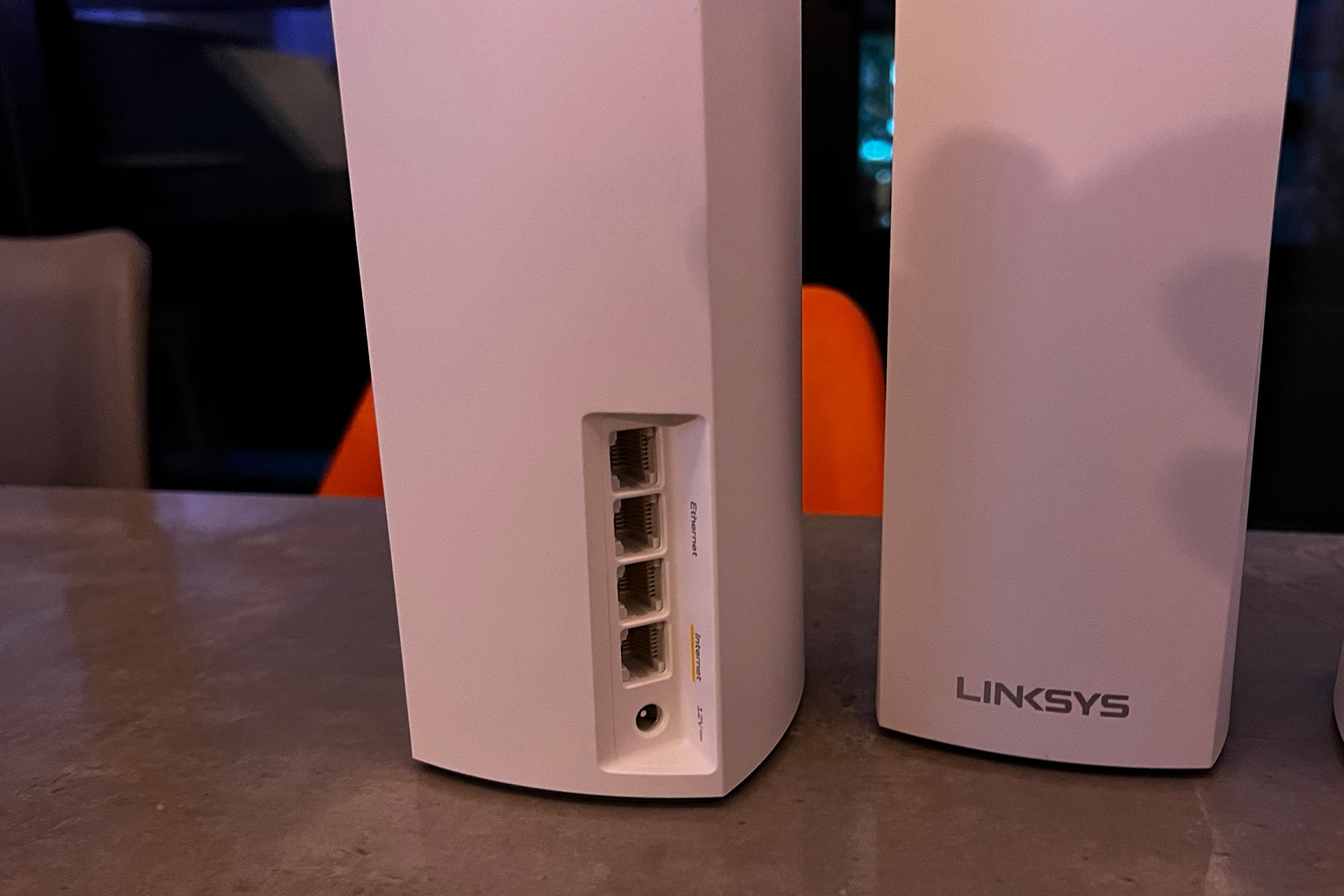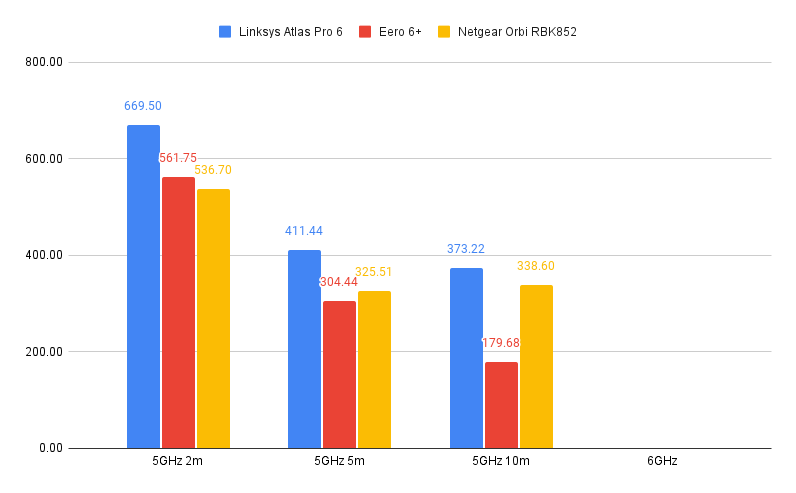Linksys Atlas Pro 6 Review
A well-priced and very fast mesh system


Verdict
Great value and very fast, the Linksys Atlas Pro 6 is a dual-band mesh system that outdoes many tri-band systems in my tests. Its app and features are a little basic, but if you care more about price and speed, this is a great choice.
Pros
- Great value
- Very fast
- Easy to set up
Cons
- Basic features
Availability
- UKRRP: £254.99
Key Features
- Wi-FiThis system uses Wi-Fi 6, with a 600Mbps 2.4GHz network and a 4,800Mbps 5GHz network.
Introduction
Previous Linksys mesh systems I’ve reviewed have come under the Velop brand name and have been tri-band devices using a dedicated Wi-Fi channel for communication between satellites. The Linksys Atlas Pro 6 may look similar (although a bit smaller) from the outside, but it’s a dual-band device that has to share its Wi-Fi bandwidth with clients and satellites.
Design and Features
- Good range of Ethernet ports
- Simple app control
The Linksys Atlas Pro 6 is available in packs of one, two or three, depending on the size of your house. I would say that bar as an upgrade, the single pack isn’t such a good choice, and if you don’t need a mesh system, then a dedicated router will do you more good.

Each device is identical, with three Gigabit Ethernet ports for the LAN and one Gigabit Ethernet WAN port. That’s a fair number of Ethernet ports for wired devices, so there’s a good chance that you won’t need to buy an external switch to go with this mesh system.

As with previous Linksys devices, satellites can be connected via Wi-Fi or Ethernet (a wired backhaul).
Configuration of the system is via the Linksys app, which took me through connecting the first device to the internet and then adding additional satellites. It’s pretty straightforward but has some oddities: when I was asked to create a password for the router, I wasn’t allowed to use one that had two repeating characters, no matter how long it was. This simply isn’t a good thing to enforce.
Once set up, the router can be controlled via the app or the web interface, although the app makes things much easier.
There’s little control over Wi-Fi, and the only way to change the channel is to run the Channel Finder, which will look for the least congested channel. A lack of manual control is something that I find more often in mesh systems, although devices such as the Eero 6 Plus tend to just change the channels used automatically and don’t give any rescan options.

There are parental controls built in, although these are basic. Rather than being able to create a profile for each household member and add all of their devices, I could only control each device individually.
That’s a touch annoying. For adding a schedule, for example, I had to add this to all of my daughter’s devices individually (phone, tablet, computer and TV), rather than being able to set one bedtime or pause all devices at once. Parental controls also don’t include web filtering, bar blocking specific websites by URL.
Advanced options include a guest network and port filtering, covering all the basics that you’d expect from a mesh system.
Performance
- Very fast
- Excellent stability
- Good range
This is an AX5400 Wi-Fi 6 system, which supports 160MHz-wide channels. Whether or not these channels will work will depend on how many other networks are nearby. In my house, I only got 80MHz wide channels.
Theoretically, the top speeds for this router are 600Mbps on the 2.4GHz band and 4,800Mbps on the 5GHz band (the number of streams is not disclosed). As mentioned earlier, all of this bandwidth is shared between clients, as there’s no dedicated Wi-Fi channel for communication like you get with the Netgear Orbi RBK852.
I tested throughput, starting at close range, where I saw throughputs of 669.5Mbps, which is very fast. Moving to the first floor, throughputs dropped to a reasonable 411.44Mbps. On the second floor, speeds were still good at 373.2Mbps. Clearly, as the Linksys Atlas Pro 6 had defaulted to using Channel 100, it had managed to avoid interference on the lower channels, which most mesh systems tend to use. As a result, it outperformed a lot of the competition, even tri-band models.

Latest Deals
Should you buy it?
If you want a fast and reliable mesh system that doesn’t cost a fortune, this is an excellent choice.
If you want more advanced security or parental controls, then you’ll want to look at a rival product.
Final Thoughts
The app is a little basic, particularly around the slightly clunky parental controls, but overall performance is very good, with the Linksys Atlas Pro 6 punching above its weight. If you want a well-priced mesh system with good speeds, then this is a good choice. If you need more advanced controls, the Eero 6 Plus may make more sense. Otherwise, check out our guide to the best routers.
How We Test
Unlike other sites, we test every wireless router we review thoroughly over an extended period of time. We use industry standard tests to compare features properly. We’ll always tell you what we find. We never, ever, accept money to review a product.
Find out more about how we test in our ethics policy.
We used it as our main wireless router for the review period.
We throughput test all wireless devices using the same equipment in the same locations for accurate comparisons.
FAQs
It has basic ones only: you can schedule and block by device and block access to specific websites.
This model uses dual-band Wi-Fi 6, with 600Mbps 2.4GHz networking and 4,800Mbps 5GHz networking.




